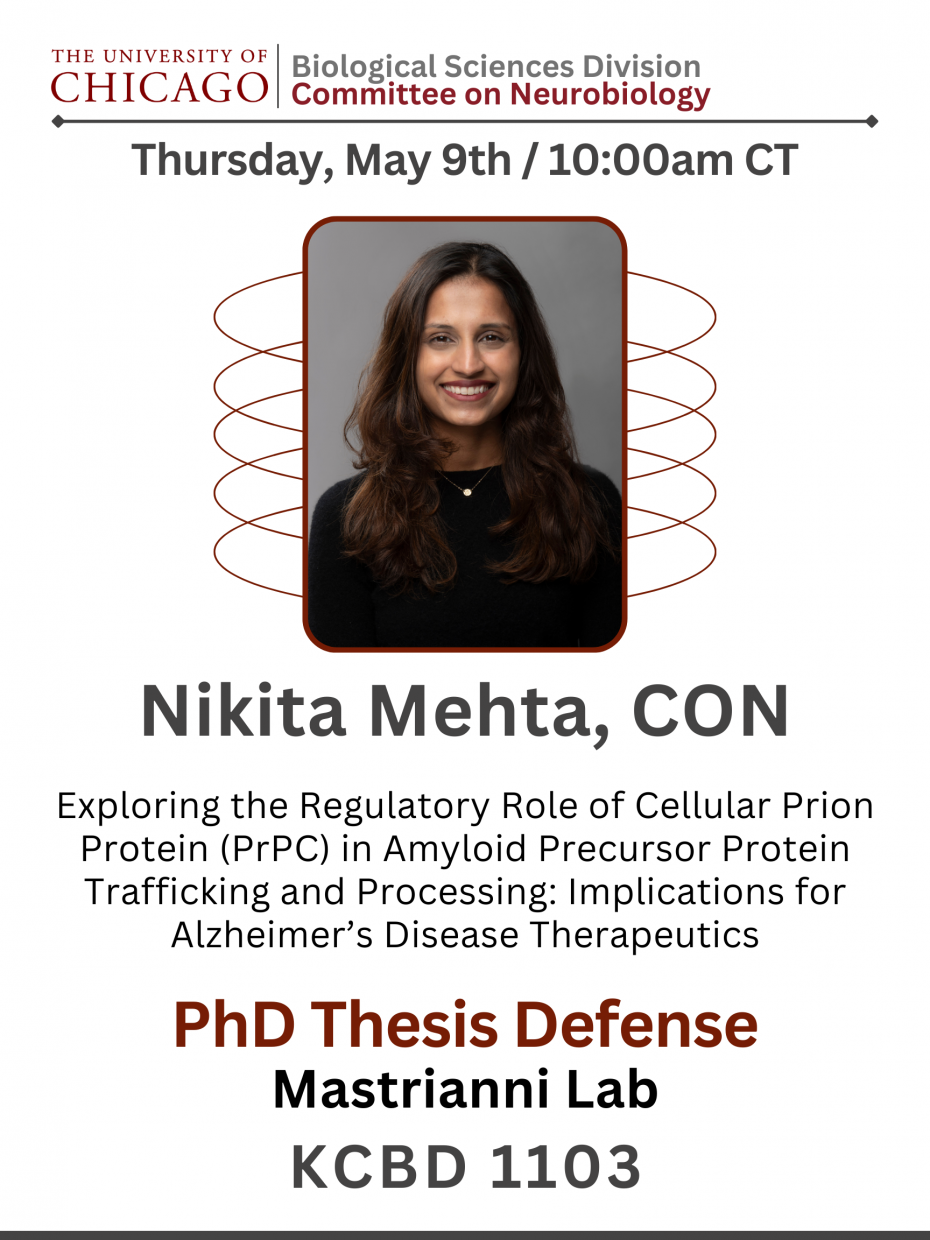
United States
PhD Thesis Defense
Thursday, May 9th, 10:00 am
Nikita Mehta, CON
Mastrianni Lab
KCBD 1103
“Exploring the Regulatory Role of Cellular Prion Protein (PrPC) in Amyloid Precursor Protein Trafficking and Processing: Implications for Alzheimer’s Disease Therapeutics”
Abstract: Although central to the development of prion disease, prion protein (PrPC) is known to interact with Alzheimer’s Disease (AD)-associated 38 to 42 amino acid-long amyloid-β (Aβ) peptides released by proteolytic processing of amyloid precursor protein (APP). We previously reported a direct relationship between PrPC expression and the levels of secreted Aβ42, although the underlying mechanism was unclear. We sought to test whether PrPC exerts its effect on Aβ by modulating APP processing. We quantified APP metabolism and Aβ secretion following siRNA-induced knockdown (KD) of PrPC in mouse neuroblastoma (N2a) cells stably expressing human APPwt (N2a-APPwt) or human APP carrying the Swedish mutation (N2a-APPswe). PrPC KD significantly reduced Aβ peptides in both cell lines without affecting APP expression or extracellular Aβ degradation. PrPC KD also significantly reduced sAPPb release in both cell lines and increased sAPPa production in N2a-APPwt but not in N2a-APPswe cells. Surface biotinylation and immunofluorescence labeling studies revealed an increase in the levels of surface APP and an increase in intracellular APP C-terminal fragments (CTFs) following PrPC KD. Using a previously validated method to assess APP CTFs in vivo, we found similar increases in APP CTFs in transgenic mice lacking PrPC compared to wild-type mice. These findings are consistent with a model whereby PrPC expression limits APP delivery to the plasma membrane and APP internalization, facilitating amyloidogenic APP processing and Aβ secretion. Our results suggest that reducing PrPC expression might be a therapeutic avenue for treating AD by limiting BACE1-cleavage of APP, an essential step in Aβ production.